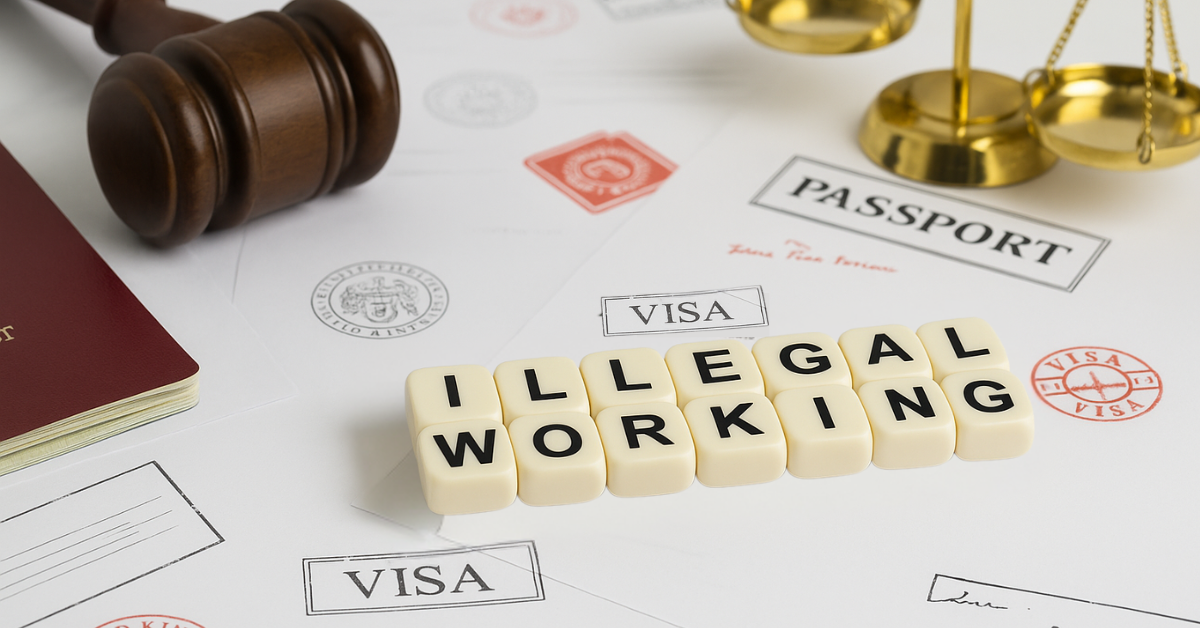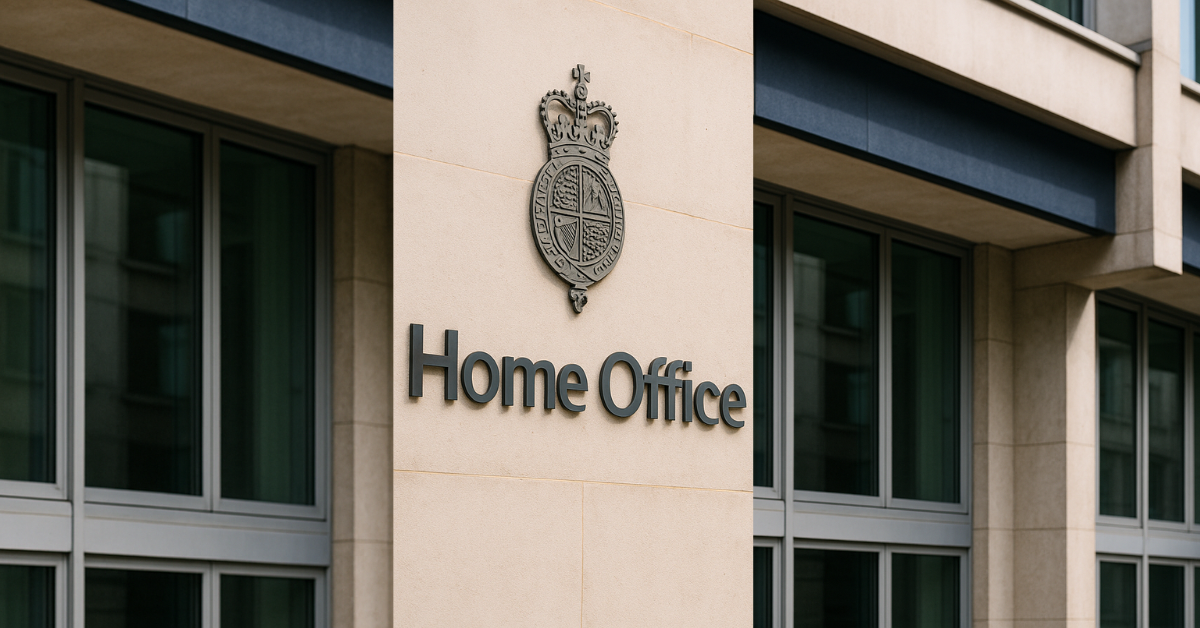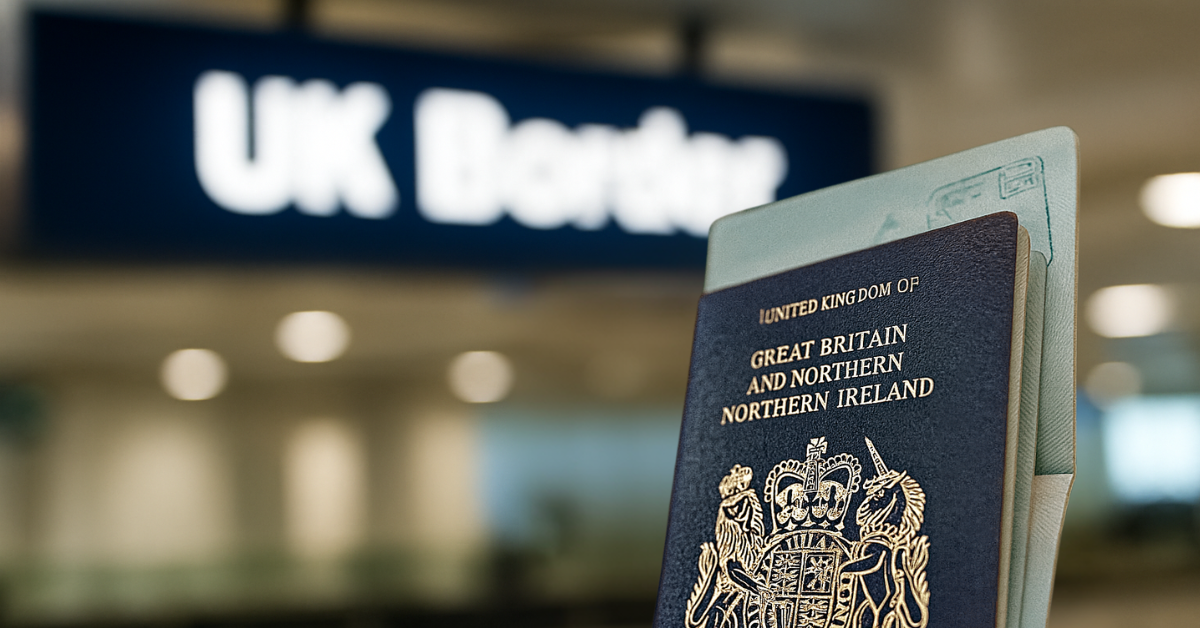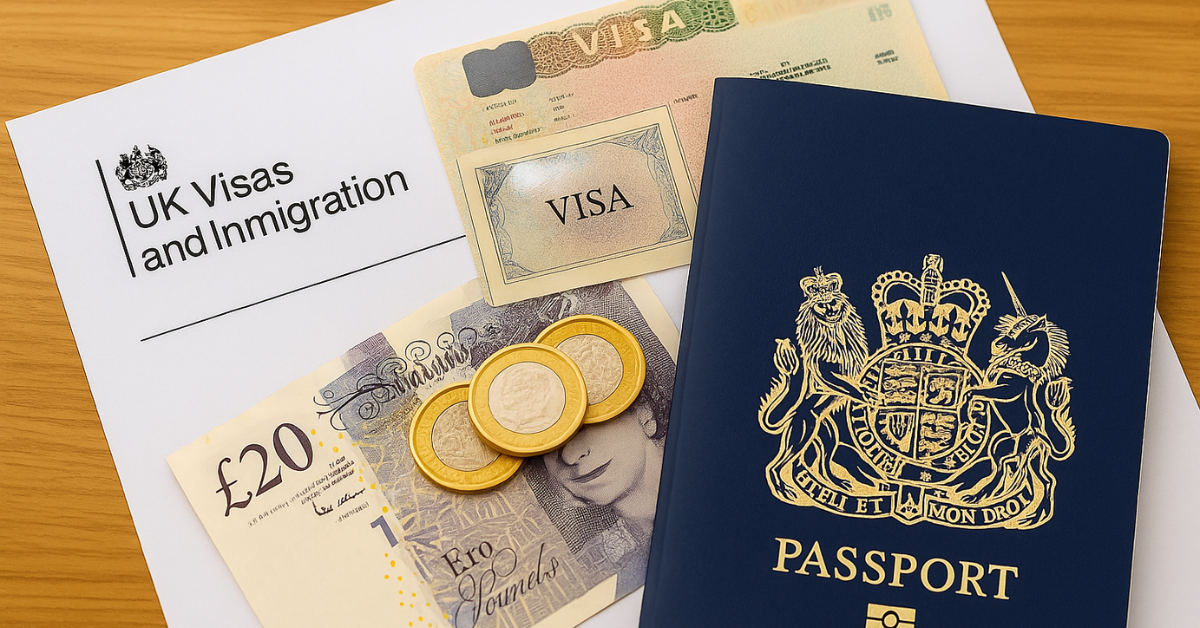
Right to Work Checks: What Employers Need to Know
Employers must conduct a right to work check on all employers to ensure that they are allowed to work in the UK, click here to read more about the checks.
Paragon Law
Right to Work Checks
What is a right to work check?
A right to work check is a check which employers must do on every UK-based employee to confirm that they have the appropriate immigration status in order to work in the UK. If you have carried out a right to work check you will be given a statutory excuse if it is later found that you have employed an illegal worker.
|
Contents |
|
An introduction to right to work checks International students and RTW checks |
What is a right to work check?
A right to work check is a check which employers must do on every UK-based employee to confirm that they have the appropriate immigration status in order to work in the UK. If you have carried out a right to work check you will be given a statutory excuse if it is later found that you have employed an illegal worker.
What is the purpose of right to work checks?
The purpose of right to work checks is to verify that someone has the required immigration status to work in the UK.
Why were right to work checks introduced?
During Tony Blair's leadership of 'New Labour', the Government faced criticism for their immigration policy and failure to effectively prevent illegal working. Consequently, the Government, as well as subsequent administrations, have adopted a stricter stance on immigration. As part of this, employers are now legally required to conduct right to work checks to ensure that an individual has the necessary immigration status to work in the UK.
Aside from meeting legal obligations, right to work checks also allow employers to exercise some level of control. By verifying an individual's immigration status prior to them commencing employment, employers can avoid investing significant time and resources into an employee who is later found to be illegally in the UK.
In essence, right to work checks were implemented to enable the Home Office and the Government to maintain oversight of the UK's immigration system and to take swift action in the event of illegal immigration.
Are right to work checks a legal requirement?
Yes, right to work checks are a legal requirement. Failure to conduct a right to work check can result in very serious consequences.
What happens if you don’t do a right to work check?
If you don’t do a right to work check and it is later found that employees hired are not permitted to work in the UK, then the following consequences may incur (among other consequences):
-
A civil penalty of up to £20,000.
-
A criminal conviction of a 5 year penalty.
-
Closure of the business.
-
Disqualification as a director.
-
Sponsor licence revocation.
-
Seizure of earnings made as a result of the illegal employees.
It is important to note that the Home Office does get things wrong, and so, it is important to get advice from an immigration lawyer if you are found to have employed someone who did not have the right to work in the UK.
The three permitted right to work checks
There are a number of right to work checks:
When should right to work checks be done?
Right to work checks must be carried out on all new starters before their first day of work. For instance, you may choose to ask those shortlisted for interview to present their right to work documents at interview to verify that they have the right to work in the UK prior to employment. Alternatively, you may choose to only ask the successful candidate to present their right to work documents prior to commencing employment with you. When you ask for the right to work documents to be presented to you is up to your business, but you must check and verify the right to work documents of new starters before they start their employment.
Businesses should have a written policy that is regularly updated in accordance to the new immigration rules in order to maintain a statutory excuse. This policy should state that right to work checks need to be done prior to an individual commencing employment with you.
How often should the right to work be checked?
How often you should be carrying out right to work checks is dependent on whether an individual has a time limited check or a non-time limited check. For instance, if an individual has evidence of their British citizenship, indefinite leave to remain, or another form of permanent status then you do not need to carry out any further checks. However, if an individual’s leave is time limited then you will need to mark the date in which their leave expires and then carry out a right to work check before that date to ensure that you are not employing someone whose visa has expired.
We recommend that you commence the checking 3 months before an individual’s visa expires. This length of time ensures that the individual is aware of what is happening and enables them to sort out relevant processes, e.g., talk to their legal representative or allow their sponsor to prepare their application. You need to ensure that the application has been submitted prior to the person’s visa expiring, once you receive this confirmation then you can proceed with the Employer Checking Service.
Do agencies have to check right to work?
If the staff are paid by the agency, then it is the agency’s responsibility to ensure that they have the right to work in the UK. Make sure that you have this in your contract in order to mitigate against any possible implications.
However, it is important that you have checked that the agency has carried out these right to work checks. This is because if you have an unannounced visit at your business premises and it turns out that the agency workers do not have the right to work in the UK then you are still likely to face reputational damage.
]
Manual Right to Work Checks
What is a manual right to work check?
Manual right to work checks can be used to check a person’s right to work in-person using a physical copy of their right to work documents. This kind of check is used when an online check cannot be conducted.
How to do a manual right to work check
A manual right to work check has three stages: obtain, check and retain.
Step 1: Obtain
You must gain the individual’s original documents using either List A or B (whichever is applicable to the individual).
Step 2: Check
Once you have the original documents, you must check that they are genuine, they belong to the individual in question, and they enable the individual to do the type of work on offer. This check can be done either in-person or via live video link, however, you must be in possession of the original documents in order to have a statutory excuse. When doing the manual checks you are checking that:
-
-
The photographs in any documents match the person in front of you.
-
The date of birth on the documents is consistent with the person who is presenting themselves to you.
-
The expiry dates are valid - make sure to make a record of the expiry date(s) to ensure that you make a follow-up check.
-
There are no specific restrictions on the type of work that the individual is doing.
-
The UKVI also asks that you look to see if there is any evidence of the document(s) being tampered. However, as employers you are not expected to be fraud experts, and so, the fact that you have gone through this process will give you a statutory excuse.
Step 3: Copy
After you are satisfied that the individual is who they say they are and has the right to work in the UK then you must retain a copy of their right to work documents for your records.
The copies you make must be clear and kept in a format which cannot be edited (either an electronic or physical copy). You must also make a record of the date in which the check took place.
All right to work documents (except passports) should be copied in full. When it comes to copying passports, you only need to make a copy of those pages which contains an expiry date, the holder’s nationality, date of birth, immigration permission, biometric details, photograph, and information about their permission to leave/enter and right to work in the UK.
This electronic or physical copy should be securely stored for the duration of employment and for an additional 2 years after the employment has ended.
Online Right to Work Checks
What is an online right to work check?
An online right to work check (also known as a digital right to work check) is conducted through the internet using a share code (in most cases) to confirm an individual’s right to work in the UK.
Not all individuals will be able to have their right to work status checked online and in these circumstances a manual right to work check will need to be carried out.
To carry out a digital right to work check, head over to the online service.
Who can you run online right to work checks on?
An online right to work check can be used by an employer to verify an individual’s right to work status in the UK. From the 6th of April 2022, a digital right to work check must be conducted on individuals who have one of the following documents:
-
A biometric residence permit (BRP),
-
A biometric residence card (BRC),
-
A frontier worker permit,
-
An eVisa.
How do you do an online right to work check?
In order to run an online right to work check, the individual (current or prospective employee) will need to generate a share code and pass it on to you. You will then need to use this share code alongside the worker's date of birth to complete the online right to work check.
Step 1: Use the Home Office online service
-
-
Gain the individual’s share code.
-
Head to the service ‘View a job applicant’s right to work details’ on GOV.UK.
-
Enter the individual’s share code and date of birth.
-
Step 2: Checking the individual’s permission to work in the UK
-
-
You must verify that the photograph on the right to work check is that of the individual you want to hire (this can be done face-to-face, or by video link).
-
You must check that the individual has the right to work in the UK to do the type of work which you hope to employ them to do and see if they have any restrictions.
-
Make a note of the expiry date to ensure that you are prepared to carry out follow-up checks before this date.
-
Step 3: Retaining the evidence
You must keep a copy of this digital right to work check in the form of a ‘profile’ page. This profile page is the one which contains the individual’s photograph and the date which the check was carried out. You can either print the page or save it as a PDF or HTML file. This electronic or physical copy should be securely stored for the duration of employment and for an additional 2 years after the employment has ended.
How to generate a share code for online right to work checks
In order to carry out a digital right to work check, individuals will need to provide a share code.
To generate a share code, individuals must head over to this link (‘Prove your right to work to an employer: get a share code’) and fill out the relevant information. Once completed a share code which is 9 characters long (starting with a W) will be generated and this must be passed on to you (the employer).
This share code will be valid for 90 days and it can be used as many times as needed.
When this share code is used alongside the individual’s date of birth you will be presented with the relevant information regarding the individual’s right to work in the UK.
Please note that when accessing their share code, individuals are required to state the purpose the share code is needed for. Share codes which begin with a ‘W’ have been generated with the purpose of proving an individual’s right to work. If you have been presented with a share code which starts with a different letter (R or S) then this cannot be used to prove a worker’s right to work in the UK, and so, you will need to request that the individual generates a new right to work share code.
Individuals can choose to send their share code directly to you, or they can share it to you through the online service. If they choose the latter option, then you will receive an email from [email protected].
Digital Right to Work Checks
What is a digital right to work check?
Employers can use certified digital identity service providers (IDSPs) and identification document validation technology (IDVT) to conduct digital identity checks on eligible British and Irish citizens. The introduction of this technology to conduct digital identity checks is to accelerate the recruitment and onboarding process.
An IDVT can be used to verify a British or Irish citizen who has a valid passport (or passport card if they are an Irish citizen).
How do you do a digital right to work check?
Step 1: Check
You must conduct a visual check of the individual, checking that the person in front of you matches the documents provided (e.g. matches the photographs and their date of birth is consistent). This check can either be conducted in-person with the person physically in-front of you, or via live video link with the individual.
Step 2: Copy
If you are satisfied that the person presenting to you is who they say they are then you must make a copy of their documents and send them to your chosen IDVT provider. Once the documents are uploaded, the IDVT will generate a report which will either confirm or deny that the document is valid. If the report confirms that the documents provided are valid then you will have a statutory defence.
Step 3: Retain
You must retain copies of the IDVT for the length of the individual’s employment, plus an additional two years.
Employer Checking Service
What is the Employer Checking Service?
The Employer Checking Service, also known as ECS, is a service which is used to check an individual’s immigration status when the individual is unable to present valid right to work documents or when they have an outstanding immigration application or appeal.
What is the purpose of an ECS check?
By conducting an ECS check, you can verify whether an employee with a time-limited immigration status has made an application to extend or switch their visa before the current one expires. Unlike the Home Office online check, the ECS check does not require any documentation.
When should the Employer Checking Service be used?
Usually, Employer Service Checking (ECS) checks are carried out when a current employee's immigration status is time-limited and has expired. In such situations, it is crucial to ensure that the employee has either applied to extend their visa or switched to another UK visa.
To achieve this, you must conduct the ECS check and obtain a 'positive verification notice' (PVN) from the Home Office. The PVN confirms that the individual has made an in-time application to either extend or switch their visa. It is worth noting that the PVN remains valid for six months. However, if a decision on the immigration case is not reached within six months, another ECS check must be done to obtain another PVN. It is important to keep in mind that the second PVN will only be valid for another six months while the individual awaits a decision on their immigration status.
What does ECS mean?
ECS is an abbreviation for an Employer Checking Service and it is a tool that enables employers to verify the immigration status of their employees. Specifically, it is useful when an employee claims that their visa is about to expire, but they have already submitted another application. With the ECS, employers can confirm whether the employee has indeed submitted an application and obtain evidence to support this.
To carry out an ECS check, employers can go online and enter the relevant details. If the employee has submitted and application, then you will receive a ‘positive verification notice’ (PVN). It is important to note that it may take up to 28 days for the UKVI’s system to be updated. For instance, if an individual submitted their application on 1 May 2022, you should not expect to receive a PVN until the end of May 2022.
What is the difference between the Employer Checking Service and an Online Right to Work check?
The Employer Checking Service is a tool which allows employers to verify whether an individual has taken steps to renew their visa before their current one expires. By using the ECS, employers can obtain evidence that an individual has submitted a new visa application and ensure they remain compliant with immigration regulations.
Whereas, online right to work checks only applies to specific types of visas such as BRPs, eVisas, and the Frontier Work Permit. An online right to work check serves to confirm the authenticity of these documents and verify that the photograph provided in the document matches the individual. It can be carried out either digitally or in-person, providing a convenient and efficient way for employers to ensure that the documents presented by their employees are legitimate.
If someone has applied for a visa extension, is there a 30-day grace period for them to obtain and provide a new right to work?
If an individual applies for a visa extension close to the expiry date of their current visa and their ECS check or PVN is not positive, it can create a challenging situation. To avoid this, it is crucial to encourage individuals to apply for an extension at least one month in advance.
However, if you do find yourself in such a predicament, it’s best to gather as much evidence as possible to prove that the individual has applied for a visa extension.
What is a positive verification notice (PVN Right to Work)?
A Positive Verification Notice (PVN) is confirmation that an individual has the right to work in the UK. By obtaining a positive verification notice, an employer will have a statutory excuse for six months from the date on the PVN.
International Students and Right to Work Checks
The immigration permissions of international students in the UK means that the process for assessing their right to work status is slightly different.
As with all right to work checks you need to obtain evidence that the individual has immigration permission to be in the UK and that they are permitted to do the type of work in question. In the case of international students you need to ensure that they have student status in the UK (e.g. check their biometric residence permit). When doing this check, note down the expiry date of their visa so that you can make a follow-up check in the future to discuss their plans for the future (switch their visa, extend their visa, or leave the UK) and ensure that they are making the appropriate action.
However, in addition to this you must obtain a letter from the education institution where they are studying in order to confirm their term dates. You need this information because international students have the following immigration restrictions:
-
International students studying at degree level or above can only work for up to 20 hours per week (during holiday periods they can work full-time).
-
International students studying below degree level can only work for up to 10 hours per week (during holiday periods they can work full-time).
By obtaining a letter which confirms their term dates you will be able to monitor and change their hours accordingly, this will be especially helpful if you are increasing their hours outside of term time.
As discussed, international students can only do a set amount of hours per week during term time - these hours include second jobs and voluntary work too. Therefore, if you find out that an employee is carrying out a second job or doing voluntary work then you do need to bring it to their attention. You don’t necessarily have to be active in terms of informing the student that it doesn't comply with their immigration permissions as it is their responsibility to ensure that they stick to the Immigration Rules, but you do have to act on it if you become aware of non-compliances.
Partners and children of individuals on a student visa may be able to apply to come to the UK as their dependants. Dependants of degree-level students can work full-time. However, before they do so you must obtain evidence of their right to work and check that they have permission to work in the role specified.
Right to Work Checks and the Skilled Worker Visa
Non-EU nationals
Currently those applying to come to the UK outside of the EU are given a three month endorsement on their passport (a three month entry visa) which enables them to travel to the UK within that time. Three months is quite a substantial period of time, which is why it is important that you keep the start date on the certificate of sponsorship up to date. For instance, if an individual’s visa starts on the 1st of May and they were originally due to commence work on the 15th of May but this has since changed to the 30th May, then whilst this causes no issues regarding the three month period, you will still need to log on to the sponsor management system and change the start date to reflect the new starting date
Once the skilled worker has come to the UK you will need to retain a copy of the three month entry visa, and as always, you will need to make a record of the expiry date so that you are prepared to conduct a follow-up right to work check. Before their entry visa expires, the worker needs to collect their biometric residence permit (usually from a Post Office). Once they have this they will need to give it to you so that you can carry out the online right to work check. As part of the right to work check you will need to record the date in which their biometric residence permit expires so that you have evidence to show that you are aware of any approaching deadlines.
EU nationals
EU nationals who are granted with a skilled worker visa are not provided with a biometric residence permit or a three-month entry visa. Instead, as soon as their skilled worker visa application has been approved they are provided with a digital status to confirm this. With this digital status you are able to view their immigration permissions and they are able to generate a share code which enables you to confirm their immigration status. As an employer you will still need to conduct a right to work check on EU nationals with a skilled worker visa, however, unlike their non-EU national counterparts, they are not given a biometric residence permit or a three-month endorsement on their passport: instead the check is completely digital.
Required documents
If you are employing an individual with a skilled worker visa you are required to retain evidence to show that you have complied with the requirements set out by UKVI. As an employer, you are required to retain the following:
-
Details as to how you found the individual (e.g. a copy of the job advert).
-
Details as to how you assessed that the individual was suitable to do the job (e.g. any assessments or references provided as part of the application).
-
The job description (can be found on the certificate of sponsorship).
-
PAYE details (can be found on the certificate of sponsorship and on P60s and payslips).
-
The Shortage Occupation Code (SOC) relied on (can be found on the certificate of sponsorship).
Right to Work Checks and Ukrainian Nationals
There are two types of visa that Ukrainian nationals can use to enter the UK: the Ukrainian Family Scheme visa and the Homes for Ukraine Scheme visa. The Ukrainian Family Scheme allows Ukrainian Nationals to join or accompany a UK-based family member in the UK. The Homes for Ukraine Scheme on the other hand allows a UK resident to sponsor and accommodate a Ukrainian family for at least six months. Both of these schemes allow visa holders to work in the UK for up to three years.
When it comes to conducting right to work checks on Ukrainian nationals, it is likely that you will be either presented with a passport or a Form for Affixing the Visa.
If the Ukrainian national had a passport at the time of making an application to one of the aforementioned schemes, then they will be given an entry stamp of their passport which is valid for six months. If you are presented with this then you will need to carry out a manual right to work check and record the expiry date of the stamp - as with all right to work checks you need to carry out the procedure of checking, copying and retaining these documents. During the six months entry clearance, the individual will need to collect their biometric residence permit. Once they have obtained their biometric residence permit they will be endorsed with a 36-months permission to stay. The employee must present their biometric residence permit to you so that you can conduct a Home Office right to work check.
Ukrainians who fled the conflict without a passport and have subsequently made an application for either the Homes for Ukraine Scheme or the Ukrainian Family Scheme visa will have been provided with a Form for Affixing Visa document. The Form for Affixing Visa is a document issued by the Home Office which will show the name of the individual, their immigration status, and what visa they have been granted (in this case either the Homes for Ukraine Scheme or the Ukrainian Family Scheme visa). With this document you will have to conduct a manual right to work check and follow the appropriate procedures when it comes to retaining and copying the document. However, in addition to this you must also do an Employer Checking Service check and obtain a positive verification notice (PVN) to confirm that the individual has an appropriate visa status. By doing this check you will have a statutory defence of six months to employ the individual once you receive the PVN confirming that they have the relevant visa under this document. During this six month period, the colleague will collect their biometric residence permit and once they are able to show you their biometric residence permit you will then need to conduct the Home Office right to work check to obtain your statutory excuse.
So in short, you will need to do an initial check confirming that they have immigration status in the UK and then you must do a follow-up right to work check once they have received their biometric residence permit.
How can Paragon Law help?
The business immigration solicitors at Paragon Law have assisted countless businesses to conduct right to work checks and remain compliant in their duties. Additionally, our immigration lawyers regularly host exclusive webinars for their clients to inform and educate them on the latest updates regarding right to work checks. For further further information or assistance on right to work checks, then please get in touch with us. Alternatively, if you would like to read about some common right to work FAQs then please head over to our dedicated article.
Subscribe for updates

How to prove your right to work to an employer
Not ready to talk? Our free immigration resources may have the answer to your questions

Border Security, Asylum and Immigration Act 2025 – What Employers Need to Know
.png)
UK Immigration Rule Changes 2025: Visa and Settlement Reforms Explained
%20What%20Sponsors%20Need%20to%20Know%20(1).png)
Upcoming Increase to the Immigration Skills Charge (ISC): What Sponsors Need to Know

Home Affairs Committee Launches Call for Evidence on Settlement Reforms

UK Immigration Rules 2025–2027: Key Visa & Policy Changes Explained

UK Immigration White Paper 2025: Visa & Settlement Rule Changes Explained

Home Secretary on UK Immigration: Settlement Rules & Border Control
.png)
UK ETA Refusals: Reasons & Next Steps



